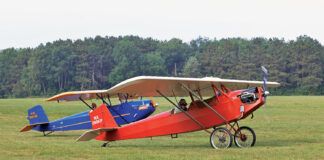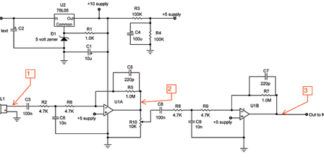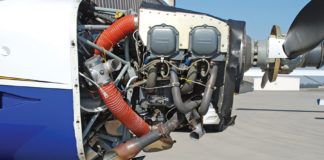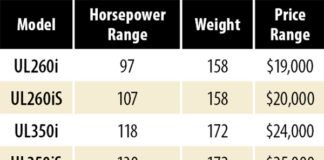Dave Armstrongs RV-7 On Saturday May 26, 2007, RV-7 (Registration No. A2-RVS) took to the air for its first flight in the capable hands of Chalkie Stobbart from South Africa. A2-RVS is the first RV to be built and registered in Botswana. It started life as a quickbuild, and 28 months and some 2200 hours later it flew off into a most beautiful African sunset. On landing some 40 minutes later, I asked Chalkie how it flew. “She flies like she knows shes an RV,” was his reply. The aircraft is equipped with “steam-driven” Vans instruments, Trio autopilot with altitude hold, Avmap GPS, single Icom radio, transponder. Its powered by a Mattituck TMX O-360 with constant-speed Hartzell prop. Thanks for all their help goes to my wife, Jenny, who has been a tower of strength; my son Garth, who helped with the bucking; and my flying buddies from South Africa, Andy Lawrence, Peter Lastrucci, John Runciman, Dolf Kruger and Chalkie Stobbart, who flew up to the ranch to help the “old man” when he was running out of ideas. I would also like to thank everyone at Vans Aircraft who made it possible for this project to happen. The design and manufacturing of this kit aircraft is out of this world. 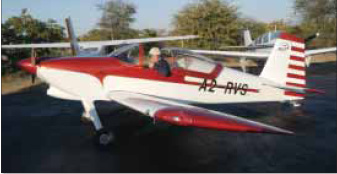
GRUNDY’s GAME RANCH BOTSWANA
mailto:[email protected]
Fritz Bachems Preceptor Super Pup
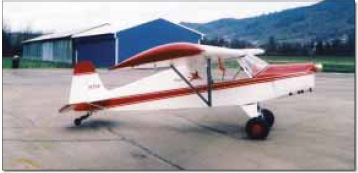
This is my second homebuilt. This time I opted for simplicity: single seat, no flaps, handheld radio, simple instrument panel and no electrical system. The engine deserves some elaboration. It is a new Czech-built 65-hp Walter Mikron that harks back to the hand-propping days. It is downright elegant in its simplicity compared to modern engines. This engine is well proven and of high quality. It is an inverted inline 2444cc four-cylinder with 6:1 compression, dual mags and air cooling. The engine is slow turning, weighs 140 pounds and runs super smooth. Its four short stacks are not excessively noisy (perhaps due to the low compression). The narrow configuration allows for minimal frontal area, which is ideal for single- or tandem-seaters. With an average loaded weight of less than 800 pounds, my Super Pup has plenty of spirit. I named her Skyhorse, and she looks to be a keeper.
Myrtle Creek, Oregon
Mervin Friesens Sonex
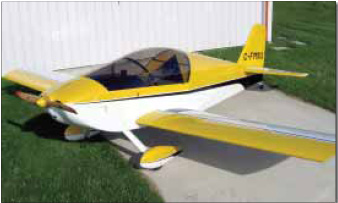
The first flight of C-FMNX took place on Saturday September 15, 2007, originating at Steinbach, Manitoba North Airport (CJB3). Conducted by friend and pilot Jonathan Epp, it was the culmination of 7.5 years of construction. He commented that the airplane flew well and that he noted no defects. C-FMNX is powered by a Jabiru 2200 engine, turning a Sensenich wood 54×48 prop. The engine temperatures were within the parameters of the Jabiru manual. Both the elevator and ailerons were trimmed well. I thought that I could treat this objectively, but I can say that it is an emotional experience to see your airplane fly the first time. To think that I formed most of the pieces, then assembled them according to the plans. That is a great experience. Building an airplane is a personal and often lonely project, but many people play important roles. I offer my thanks to all who helped in bringing C-FMNX to a successful first flight.
Kleefeld, Manitoba, Canada

